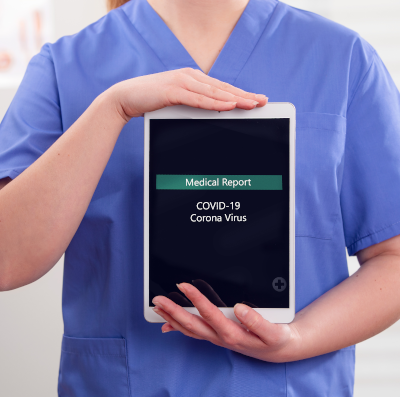Our clinical terminology team’s background in nursing, pharmacy, radiology, laboratory and other clinical areas gives us insight into how health care systems are burdened with the sheer volume of data being collected on COVID-19 patients. 
We wanted to help as an informatics group by leveraging terminology concepts relevant to the SARS-CoV-2 pandemic, so we decided to provide COVID-19 value sets freely to the public. Value sets are groupings of concepts relevant to a particular aspect of a known condition, such as signs and symptoms, lab tests, treatment options, etc. By providing COVID-19 value sets, we hoped to help relieve clinicians and researchers of the work required to assemble them AND keep them updated when new concepts are released (frequently in an evolving situation such as the pandemic).
We decided to curate value sets from ICD-10-CM, CPT, LOINC and SNOMED CT terminologies for the initial diagnosis and support of COVID-19 patients. Fifteen monthly updates were released between April 2020 and August 2021. We started with five initial value sets (the number in the following parentheses indicates the number of concepts in the value set): Diagnoses (3), Lab Tests (47), Signs & Symptoms (174), Comorbidities (732) and Complications (218). Our last release had eleven value sets: Diagnoses (2), Lab Tests (155), Lab Result Values (20), Signs and Symptoms (177), Problem List (27), Complications (252), Comorbidities (801), Administration of Vaccines (30), Vaccines (3), Administration of Therapeutics (27) and Therapeutics (32).
We shared the value sets with public health consultants, government agencies, a COVID-19 data warehouse, health care enterprises, and more in North and South America. In September 2021, we decided to end the monthly releases and instead respond to ad hoc requests, because our value sets focusing on diagnosis and patient management have “stabilized” in their growth as terminology development moved to documenting epidemiology needs. We’d like to share our lessons learned from a successful project.
Define the use case and stick to it.
Typically, value sets are created for a known condition and situation. When dealing with the rapidly evolving COVID-19 pandemic, it was easy to lose sight of the original purpose for which the value sets were created and include all new codes regardless of their fit for the intent. Because a value set acts like a “sieve” to identify the relevant codes for the use case, it is important to be specific. Keep in mind the dependent systems’ requirements to provide the targeted asset. During the first year of the pandemic, a variety of stewards released 614 value sets (later consolidated to 576) while public health yielded 20 in the second year (inferring less variability in that year).
Stay on top of versioning on multiple levels (the value set collation AND all the involved terminologies).
- Determine if the value set will include pre-release or provisional codes; be aware that some downstream systems cannot process non-versioned content. This is one of the areas uncovered by the pandemic as an opportunity for improvement in terminology deployment.
- Determine if the value set will be Intensional (rule-based) or Extensional (list); the decision affects upkeep/maintenance efforts and time.
Be prepared to keep up with releases from the standards development organizations (SDOs) that are outside of the normal release cycle.
The team subscribed to SDO news, but also monitored the SDO websites (in some cases daily), as well as searched weekly for clinical research findings on SARS-CoV-2 patients’ support and treatments. Reference sources were included in the value set releases.
When the next pandemic comes around, our experience has prepared us for increased and chaotic communications, and we will be poised to help. As Ron Johnson (head of retail operations at Apple) once said, “Innovation is this amazing intersection between someone’s imagination and the reality in which they live.” Disruption leads to innovation, so embrace the information flow.
The post Lessons learned from maintaining COVID-19 value sets appeared first on 3M Inside Angle.


